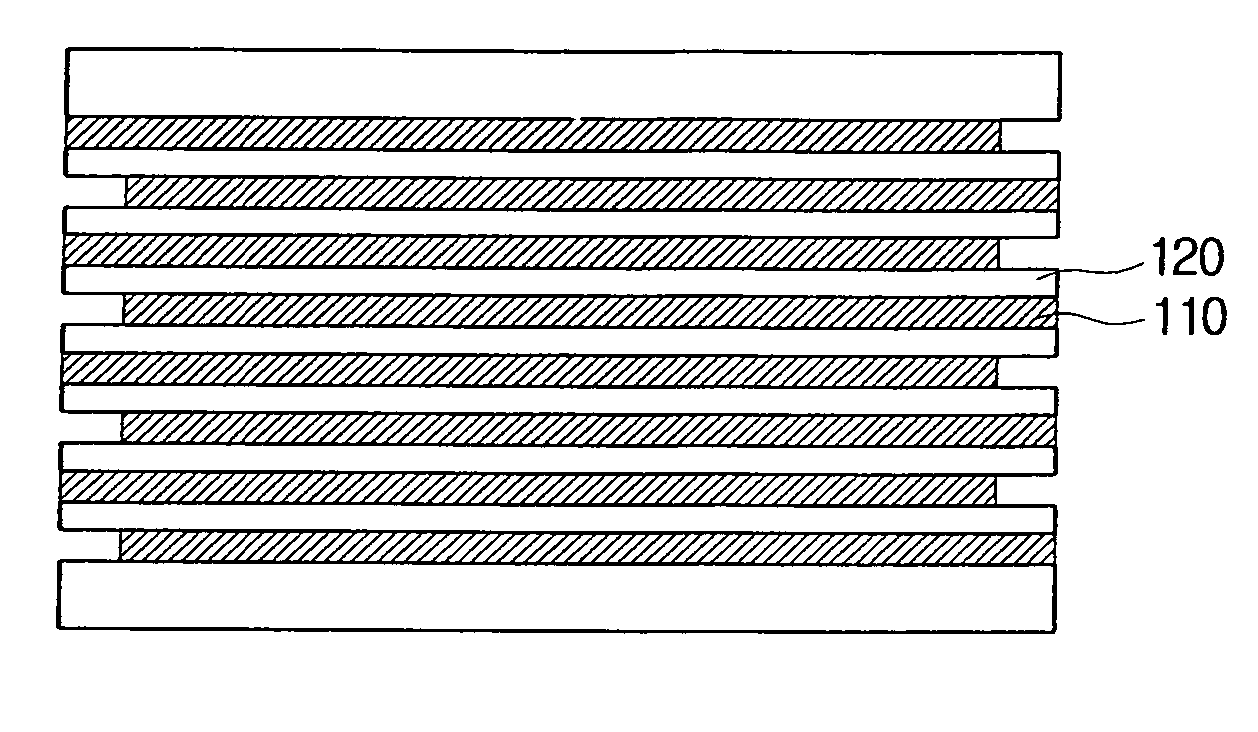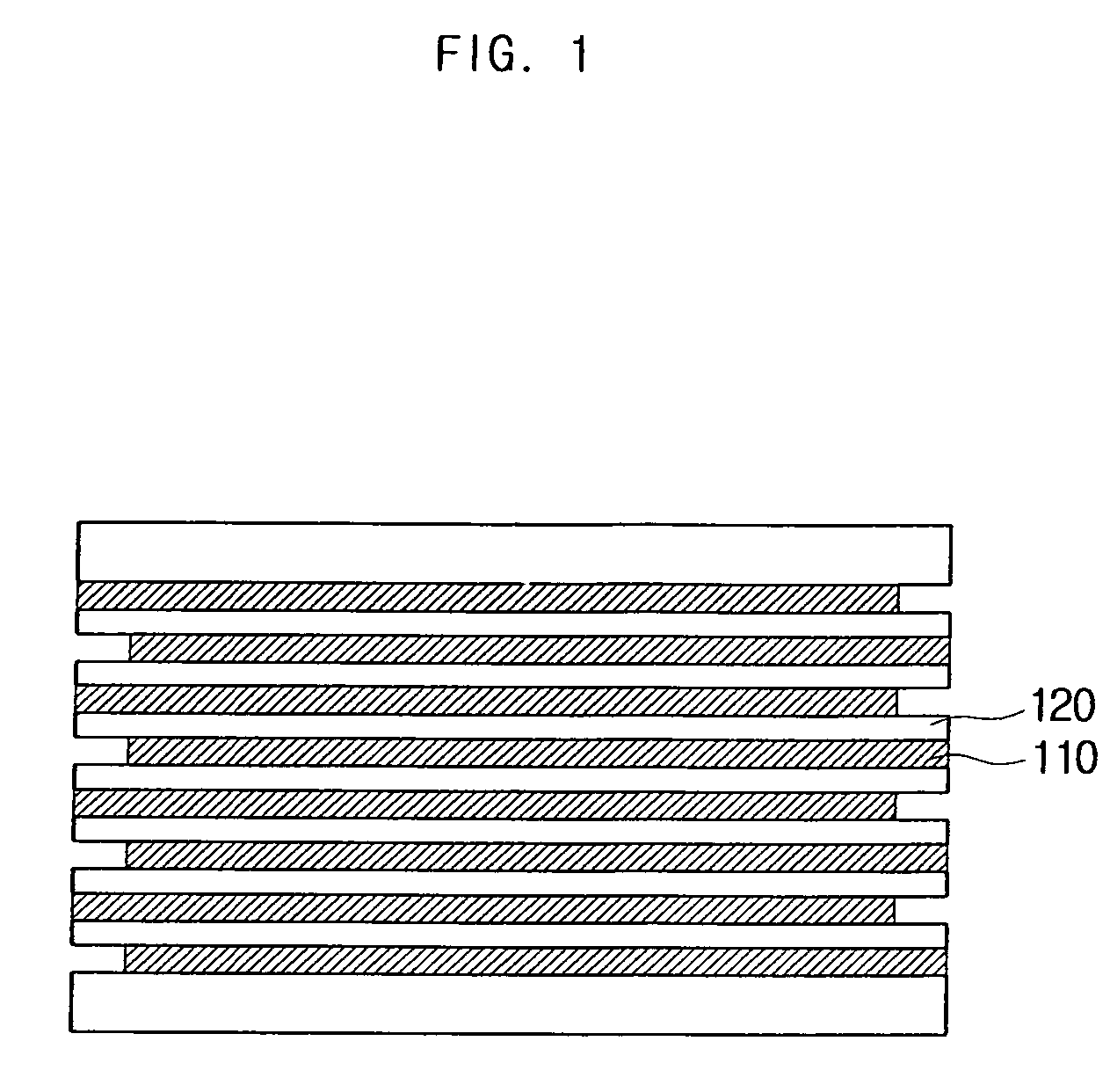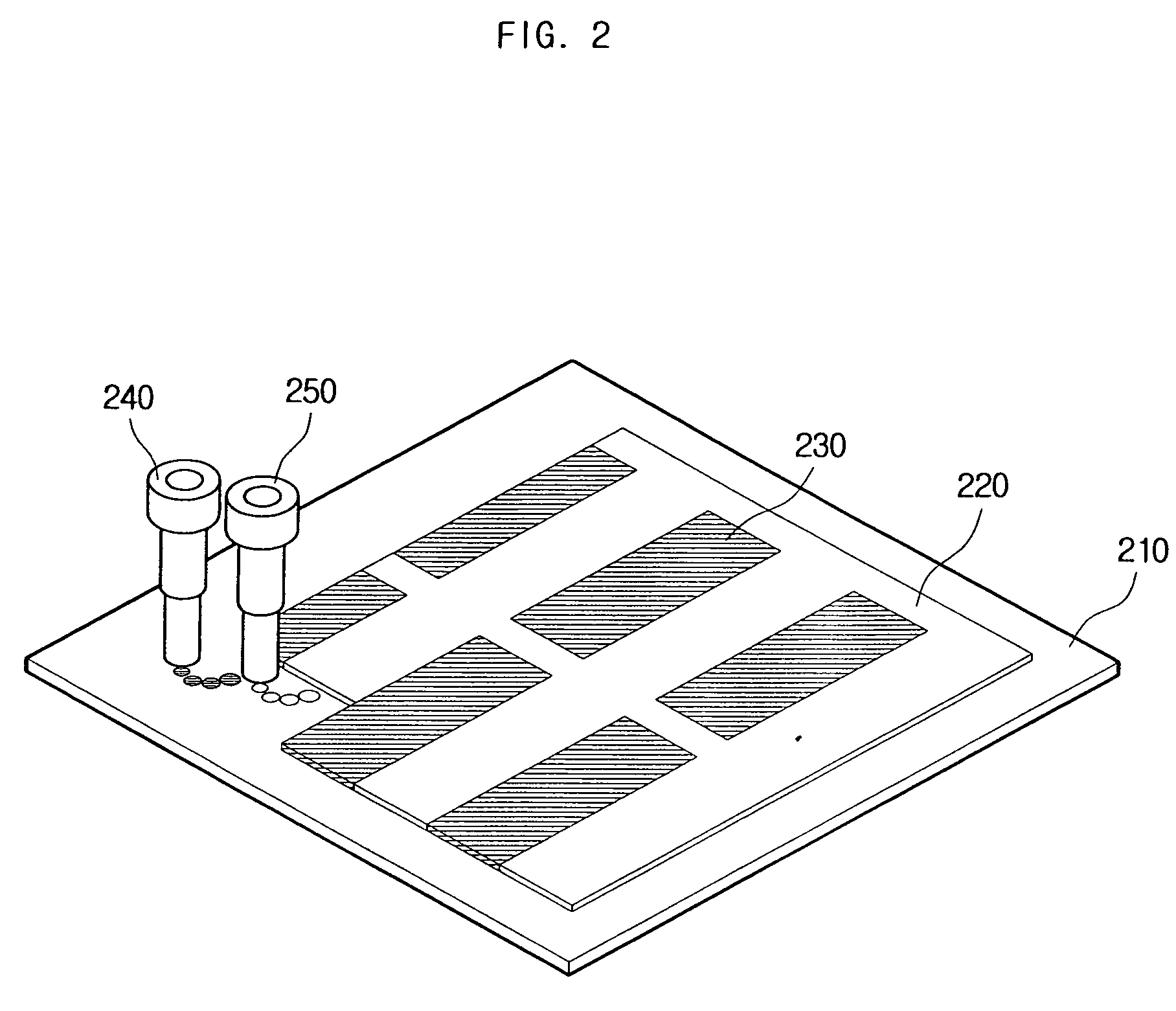Multi-layer ceramic capacitor and production method thereof
- Summary
- Abstract
- Description
- Claims
- Application Information
AI Technical Summary
Benefits of technology
Problems solved by technology
Method used
Image
Examples
Embodiment Construction
[0027] Reference will now be made in detail to the embodiments of the present general inventive concept, examples of which are illustrated in the accompanying drawings, wherein like reference numerals refer to the like elements throughout. The embodiments are described below in order to explain the present general inventive concept by referring to the figures.
[0028] The shape of electrodes described in the invention may be applied to single-layer and / or multi-layer ceramic capacitors, and will be explained with the focus on multi-layer ceramic capacitors. The basic principles of the multi-layer ceramic capacitor will first be described before discussing the preferred embodiments of the invention.
[0029] The multi-layer ceramic capacitor consists of a plurality of ceramic capacitors, each ceramic capacitor comprising a dielectric, an internal electrode, and an external electrode. The dielectric is the external body portion of the multi-layer ceramic capacitor, and since it is made o...
PUM
| Property | Measurement | Unit |
|---|---|---|
| Shape | aaaaa | aaaaa |
| Area | aaaaa | aaaaa |
Abstract
Description
Claims
Application Information
 Login to View More
Login to View More - R&D
- Intellectual Property
- Life Sciences
- Materials
- Tech Scout
- Unparalleled Data Quality
- Higher Quality Content
- 60% Fewer Hallucinations
Browse by: Latest US Patents, China's latest patents, Technical Efficacy Thesaurus, Application Domain, Technology Topic, Popular Technical Reports.
© 2025 PatSnap. All rights reserved.Legal|Privacy policy|Modern Slavery Act Transparency Statement|Sitemap|About US| Contact US: help@patsnap.com



